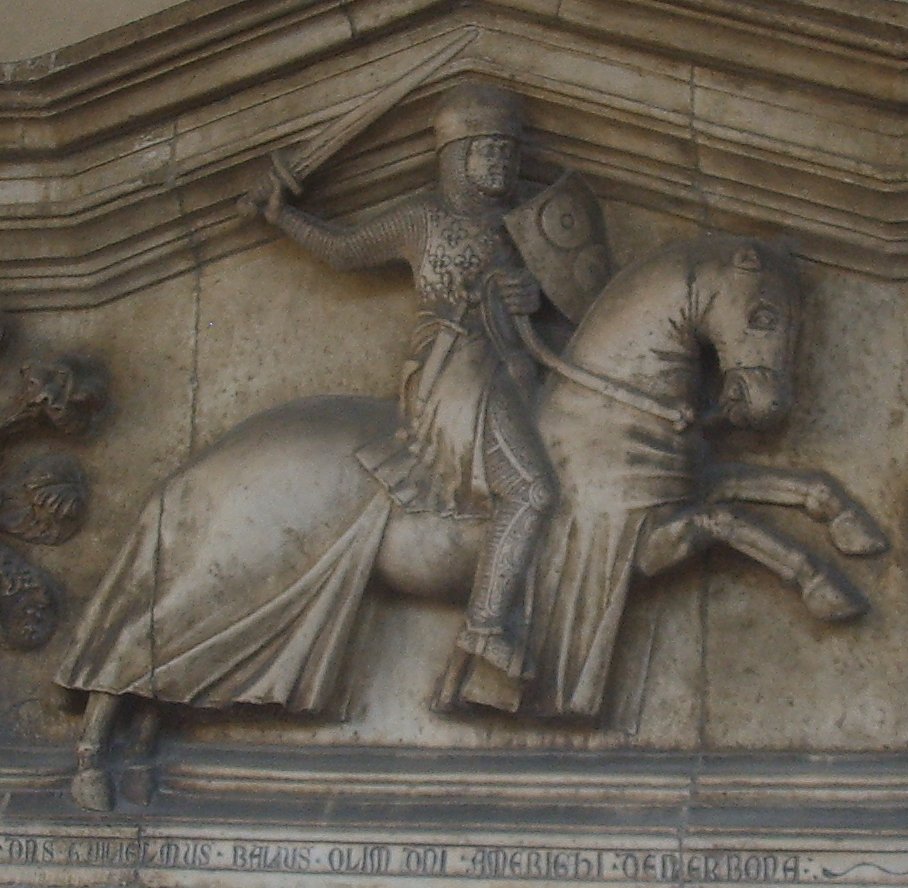
Try Amazon Audible Plus
Guillaume de Durford
Santissima Annunziata Church, Florence

Santissima annunziata chiostro grande Tomba del cavaliere.
Source


Referenced on p.226, Arms and Armour of the Crusading Era, 1050-1350, Western Europe and the Crusader States by David Nicolle.
603 Carved relief on tomb of Guilelmus Beraldus, Tuscany, c.1290
(in situ Convent of the Annunziata, Florence, Italy)
This is perhaps one of the most important sources for the arms and armour of late 13th century Italy. It shows a horseman wearing a conical, perhaps fluted helmet with a very small brim. This is an unusual helmet which has features in common with both the cervellière and the early bascinet. It is probably worn over a coif rather than having its own aventail. The rider has a long-sleeved mail hauberk with fingered mittens, mail chausses, and perhaps laminated or scale-lined sabatons on his feet. His legs are also protected by sheets of cuir-bouilli (hardened leather) forming greaves, a specialised type of cuisse, and a poleyn, the last perhaps being of metal. The fleurs-de-lys on the upper part of his surcoat are not repeated on the lower section. They are probably decorations surrounding and to some extent hiding the outer rivets of a coat-of-plates. The rider carries a typical late 13th-century sword and shield. At his hip, however, he has a large dagger, a feature not normally seen elsewhere in Western European art until the 14th century. The precocious presence of this weapon probably resulted from Italy's close contacts with Byzantium and the eastern Mediterranean.